Be Careful What You Bedazzle, and Other Tips from 40
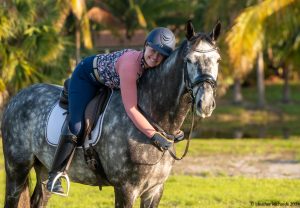 So, I’m 40 now. It doesn’t look like I thought it would as a kid.
So, I’m 40 now. It doesn’t look like I thought it would as a kid.
Some things are better than I’d dreamed. Some things are, in fact, worse. I thought I’d be further along in my life and my career, and I’m still dealing with that. But I’m prouder of unexpected things, and I’m less emotionally attached to some things I’d really thought would be important to me. And I imagine that, at 50, and at 60, and beyond, some of those things will become even more important, and some of those things will seem even sillier still.
But I’m 40 today, and coincidentally my business is turning 17 years old as well. Let me tell you some things I’ve learned, and some things I’m still learning.
Read the rest at The Chronicle of the Horse!
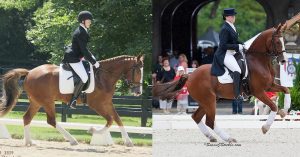 My last blog was about our
My last blog was about our 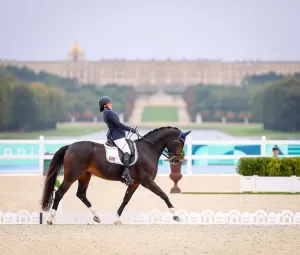 Man, oh man, what a triumph it was for us at the Paris Paralympics! We all knew it was going to be an exciting Games for USA Para Dressage, but it ain’t over ’til it’s over. And Becca Hart, Fiona Howard, Roxie Trunnell and Kate Shoemaker came, saw and conquered, and took home a mountain of medals for equestrian sports in Paris.
Man, oh man, what a triumph it was for us at the Paris Paralympics! We all knew it was going to be an exciting Games for USA Para Dressage, but it ain’t over ’til it’s over. And Becca Hart, Fiona Howard, Roxie Trunnell and Kate Shoemaker came, saw and conquered, and took home a mountain of medals for equestrian sports in Paris.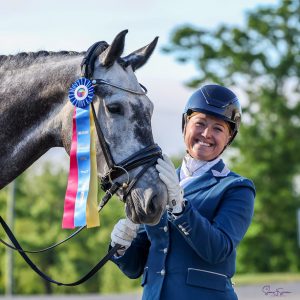 Over the years, through breeding my own and selling them, through the help of some incredible people, through a few really creative loans, and through a HECK of a lot of hard work, I’ve managed to own many of my own horses. Owning my own means I answer to no one, and it means that when they go right, the proceeds of their sales funds the next group. My goal is that each one I train and, as I’ve yet to find my Team mount, sell leads to the purchase of two more young horses to bring along; I’m ok when the sale of one leads to the purchase of one.
Over the years, through breeding my own and selling them, through the help of some incredible people, through a few really creative loans, and through a HECK of a lot of hard work, I’ve managed to own many of my own horses. Owning my own means I answer to no one, and it means that when they go right, the proceeds of their sales funds the next group. My goal is that each one I train and, as I’ve yet to find my Team mount, sell leads to the purchase of two more young horses to bring along; I’m ok when the sale of one leads to the purchase of one.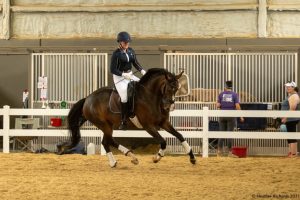 Out there on the interwebs this month were three Facebook posts that caught my eye. One was on a sales group for dressage horses, where someone called trainers to task: “What is it with trainers these days? Particularly in the USA,” she wrote. “How come no one is willing to put in the effort to help develop a good horse, and instead they just expect their clients to have the budgets to go and buy the finished product? I know there are a handful of good trainers that don’t get the recognition they deserve but it seems the majority aren’t willing to put the work in. Thoughts?” The replies were thoughtful, bringing a range of experiences to the table.
Out there on the interwebs this month were three Facebook posts that caught my eye. One was on a sales group for dressage horses, where someone called trainers to task: “What is it with trainers these days? Particularly in the USA,” she wrote. “How come no one is willing to put in the effort to help develop a good horse, and instead they just expect their clients to have the budgets to go and buy the finished product? I know there are a handful of good trainers that don’t get the recognition they deserve but it seems the majority aren’t willing to put the work in. Thoughts?” The replies were thoughtful, bringing a range of experiences to the table.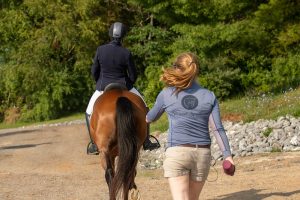 It’s a time of year when the horse job market is flooded with new graduates, both high schoolers not advancing on to college or those taking a gap year, and college grads, some from equine studies-adjacent programs, some not. We professionals in the equine business need support staff, whether it’s grooms or working students or vet techs or farrier’s assistants. There’s no barn-to-barn consistency in what one of those positions looks like, in the same way that being a server at TGI Fridays and a server at the nicest restaurant in Manhattan aren’t the same type of position. And with barns, just like restaurants, there are great ones and there are crappy ones, run by great people, run by crappy people.
It’s a time of year when the horse job market is flooded with new graduates, both high schoolers not advancing on to college or those taking a gap year, and college grads, some from equine studies-adjacent programs, some not. We professionals in the equine business need support staff, whether it’s grooms or working students or vet techs or farrier’s assistants. There’s no barn-to-barn consistency in what one of those positions looks like, in the same way that being a server at TGI Fridays and a server at the nicest restaurant in Manhattan aren’t the same type of position. And with barns, just like restaurants, there are great ones and there are crappy ones, run by great people, run by crappy people. Tjornelys Solution DWB—”Beaker,” in the barn—is one of the best talents of my career. Owned by Clearwater Farm Partners, he’s 6 years old, and came into my life in February of this year with a stellar pre-purchase exam, three exquisite gaits, a clear understanding of the connection from leg to seat to hand, and a clean flying change. The FEI 6-Year-Old test is roughly equivalent to third level, calling for collection, flying changes, the third level lateral work of shoulder-in and half-pass.
Tjornelys Solution DWB—”Beaker,” in the barn—is one of the best talents of my career. Owned by Clearwater Farm Partners, he’s 6 years old, and came into my life in February of this year with a stellar pre-purchase exam, three exquisite gaits, a clear understanding of the connection from leg to seat to hand, and a clean flying change. The FEI 6-Year-Old test is roughly equivalent to third level, calling for collection, flying changes, the third level lateral work of shoulder-in and half-pass. Team Sprieser made a triumphant entrance to the 2024 summer show season with nothing but blue! Read all about it and more on
Team Sprieser made a triumphant entrance to the 2024 summer show season with nothing but blue! Read all about it and more on 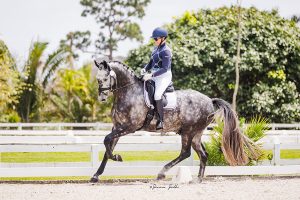 A million years ago, in a time of much healthier knees, I did triathlons. If you’ve never stood next to me, I’m 5’10” and built like a refrigerator, so when I tell you I did triathlons, I did them slowly, and I did the shortest distance class: a sprint, which is usually about a half-mile swim, 15-mile bike, and 3.1-mile run. I could do one in about two hours. Competition in these things is often by age group, but because I’m no pixie, I competed in something called the Athena division, for female athletes over 165 pounds. (Lest you were curious, the men’s division, for athletes over 200 pounds, is called the Clydesdale division.)
A million years ago, in a time of much healthier knees, I did triathlons. If you’ve never stood next to me, I’m 5’10” and built like a refrigerator, so when I tell you I did triathlons, I did them slowly, and I did the shortest distance class: a sprint, which is usually about a half-mile swim, 15-mile bike, and 3.1-mile run. I could do one in about two hours. Competition in these things is often by age group, but because I’m no pixie, I competed in something called the Athena division, for female athletes over 165 pounds. (Lest you were curious, the men’s division, for athletes over 200 pounds, is called the Clydesdale division.)